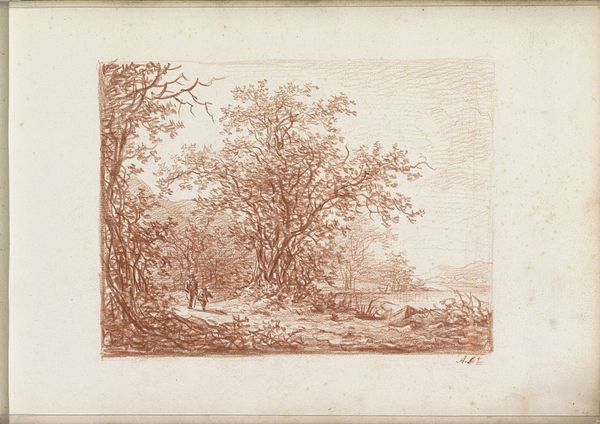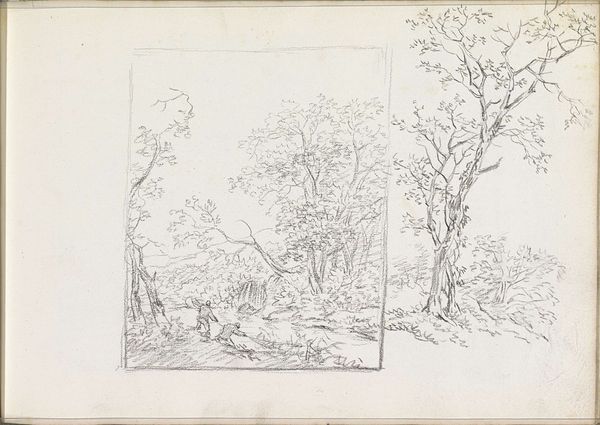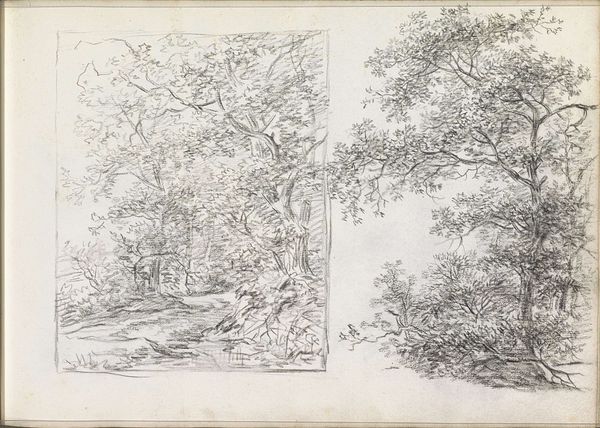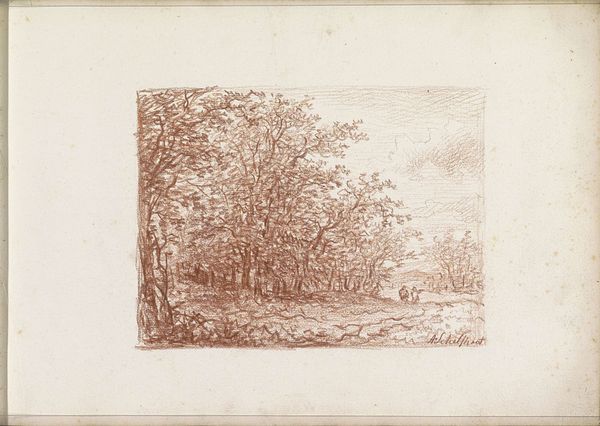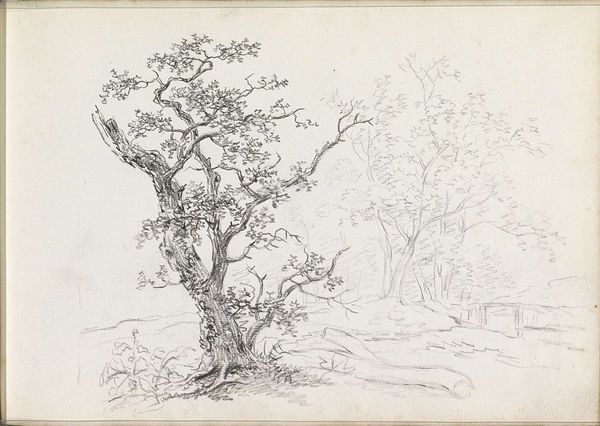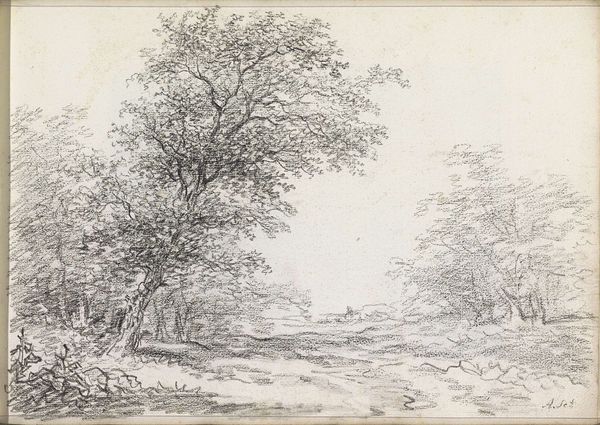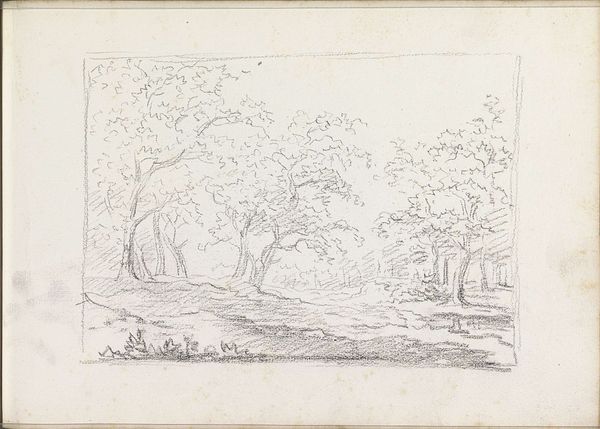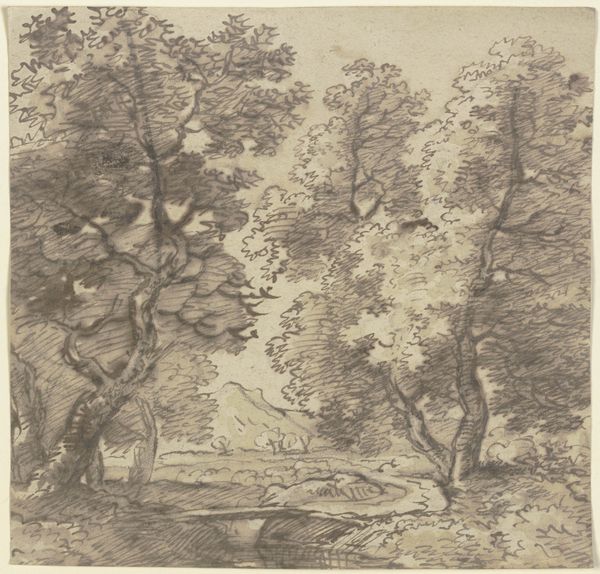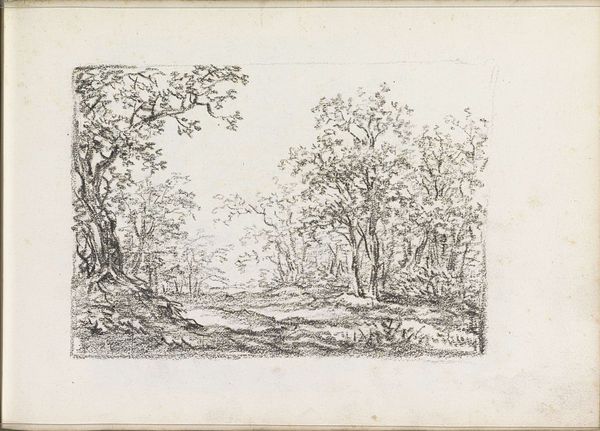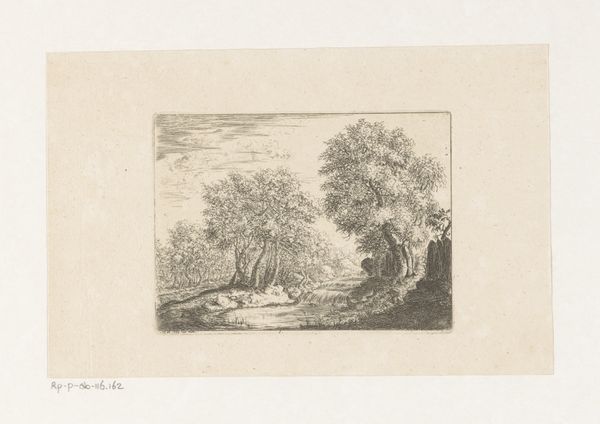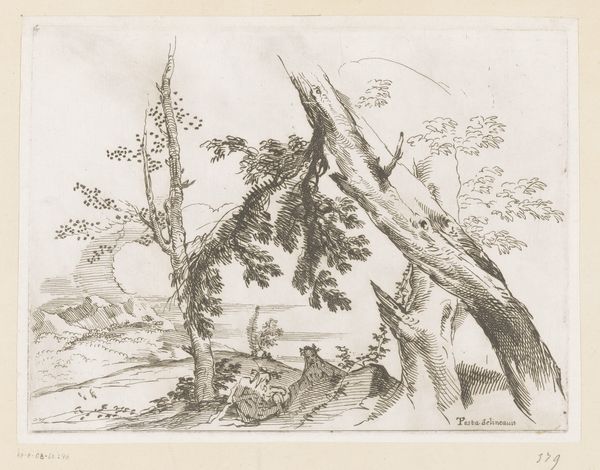
drawing, pencil
#
drawing
#
landscape
#
etching
#
romanticism
#
pencil
Copyright: Rijks Museum: Open Domain
Curator: This is "Boomstam en een landschap met wandelaars en bomen," which translates to "Tree Trunk and a Landscape with Walkers and Trees," a pencil drawing and etching made around 1811 by Andreas Schelfhout. It's currently held here at the Rijksmuseum. Editor: The reddish-brown hue immediately strikes me. It imbues the landscape with a warmth, almost sepia-toned nostalgia. The composition feels deliberately fragmented, like capturing different facets of a single, larger landscape experience. Curator: I agree. The drawing really reflects the rising Romanticism of the time, which saw nature not just as scenery, but as a site of emotional and spiritual resonance. Look at the solitary walkers in the landscape portion – tiny figures almost overwhelmed by the trees around them. Editor: That contrast emphasizes human insignificance against the grandeur of nature, a common theme in Romanticism. But, I also see it as a subtle commentary on land use. Are these walkers landowners, laborers, or simply travelers? Their presence begs questions about access and relationship to the environment. Curator: It’s true, their social position would inform their experience, wouldn't it? Schelfhout was working in a period of great socio-political change, with debates raging about land ownership and rural poverty, reflected in movements in the Netherlands such as the Patriot movement. I imagine that art like this was easily bound up in such arguments. Editor: And then the tree trunk to the right; a close study of the rugged form of an individual tree. Is Schelfhout celebrating the tree’s resilience, or perhaps lamenting the potential deforestation taking place due to economic growth? I love how the image refuses a simple interpretation. It evokes more than it tells. Curator: Exactly! And the tree, especially, seems a study in class tensions: solid, old, stable; versus nature constantly uprooting it through the cycle of erosion, wind and weather, decay and rebirth. That speaks volumes about Dutch society, in my mind, in the period of its production and reception. Editor: A reminder that nature, for all its beauty, can be indifferent to human concerns, as well. Ultimately, I leave this image struck by the dialogue it establishes between individual existence and collective history. Curator: It's interesting to think that art's role in our history is that art pieces can simultaneously reflect society's ills and also attempt to move beyond them to reach a better reality.
Comments
No comments
Be the first to comment and join the conversation on the ultimate creative platform.
